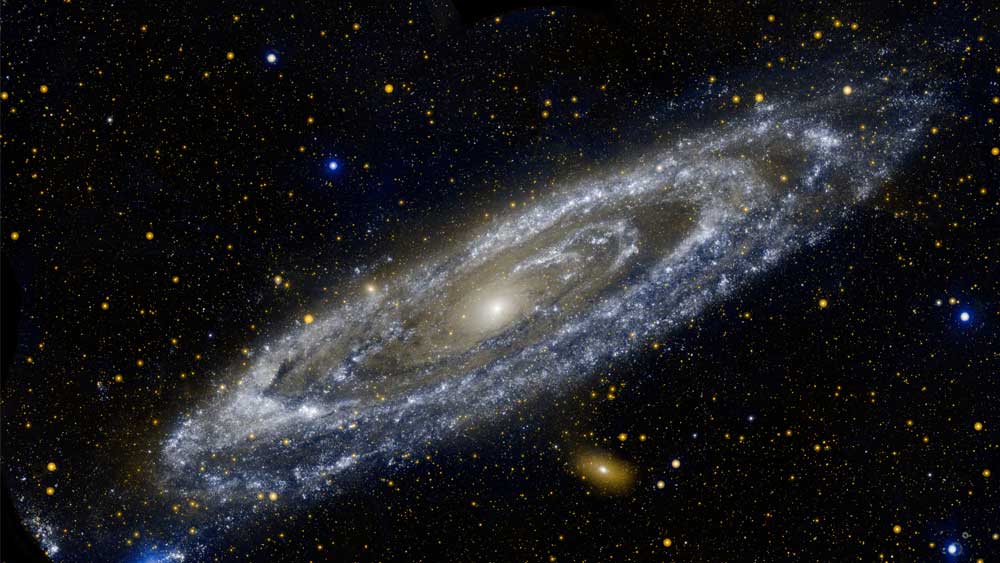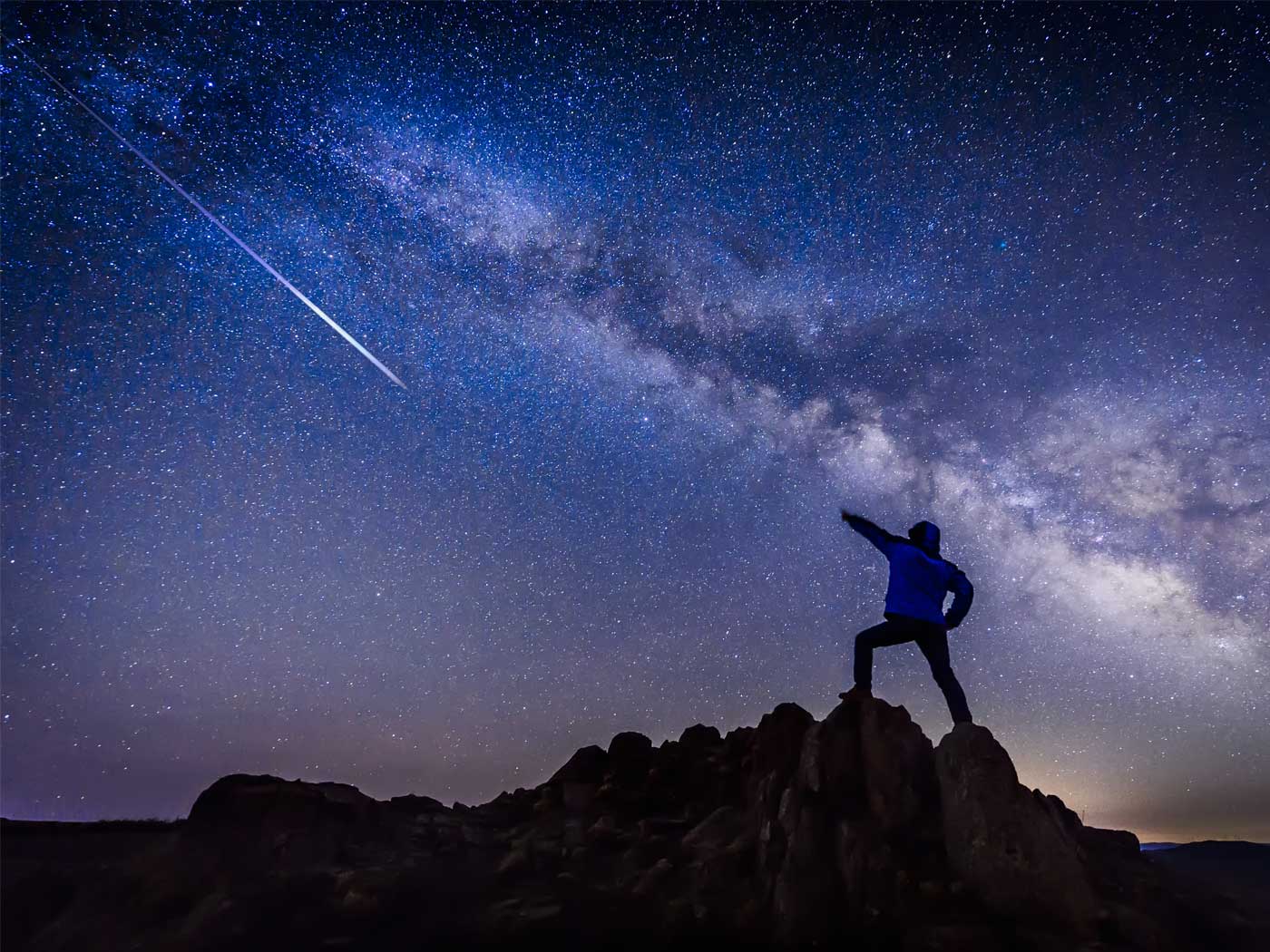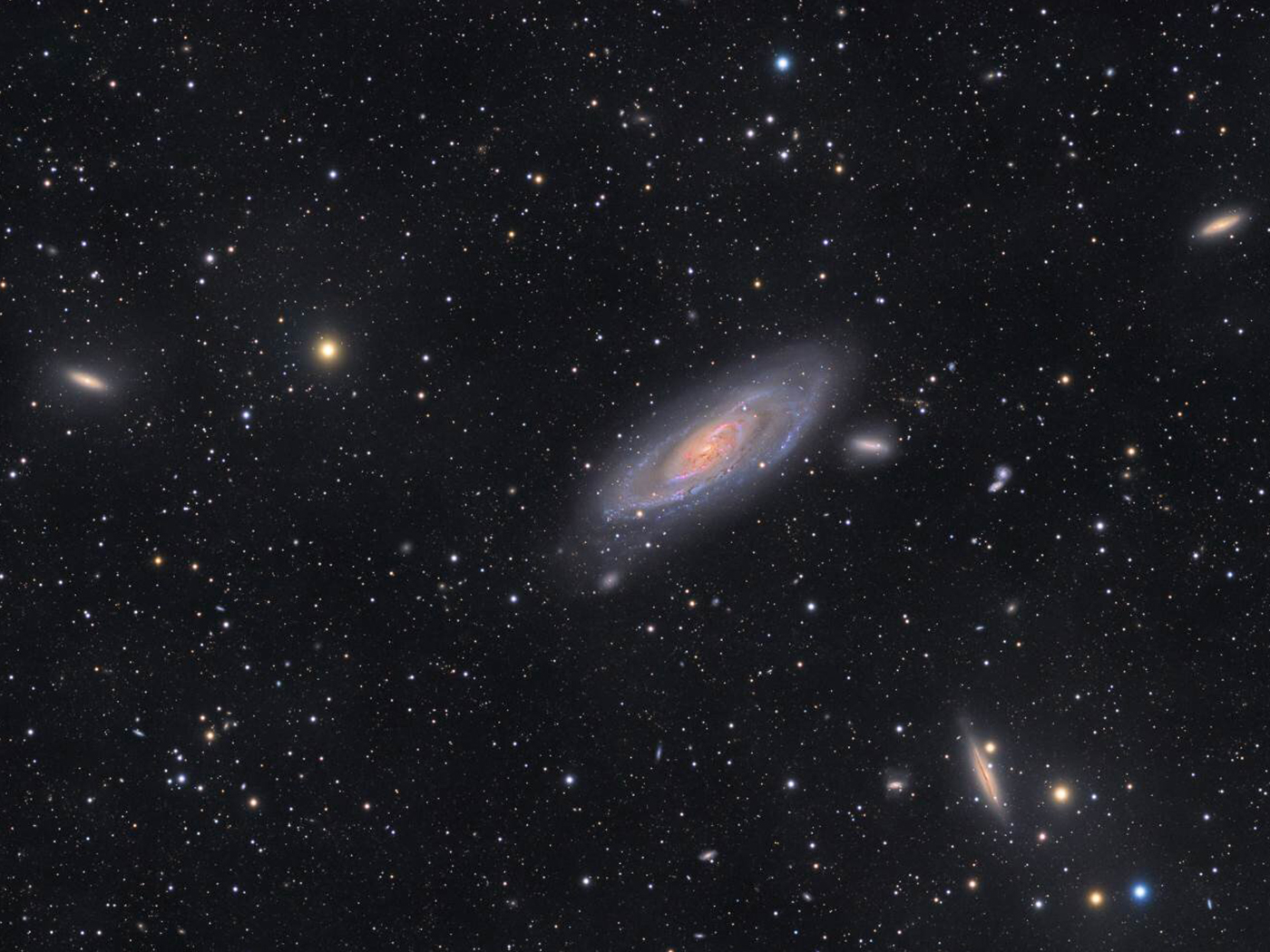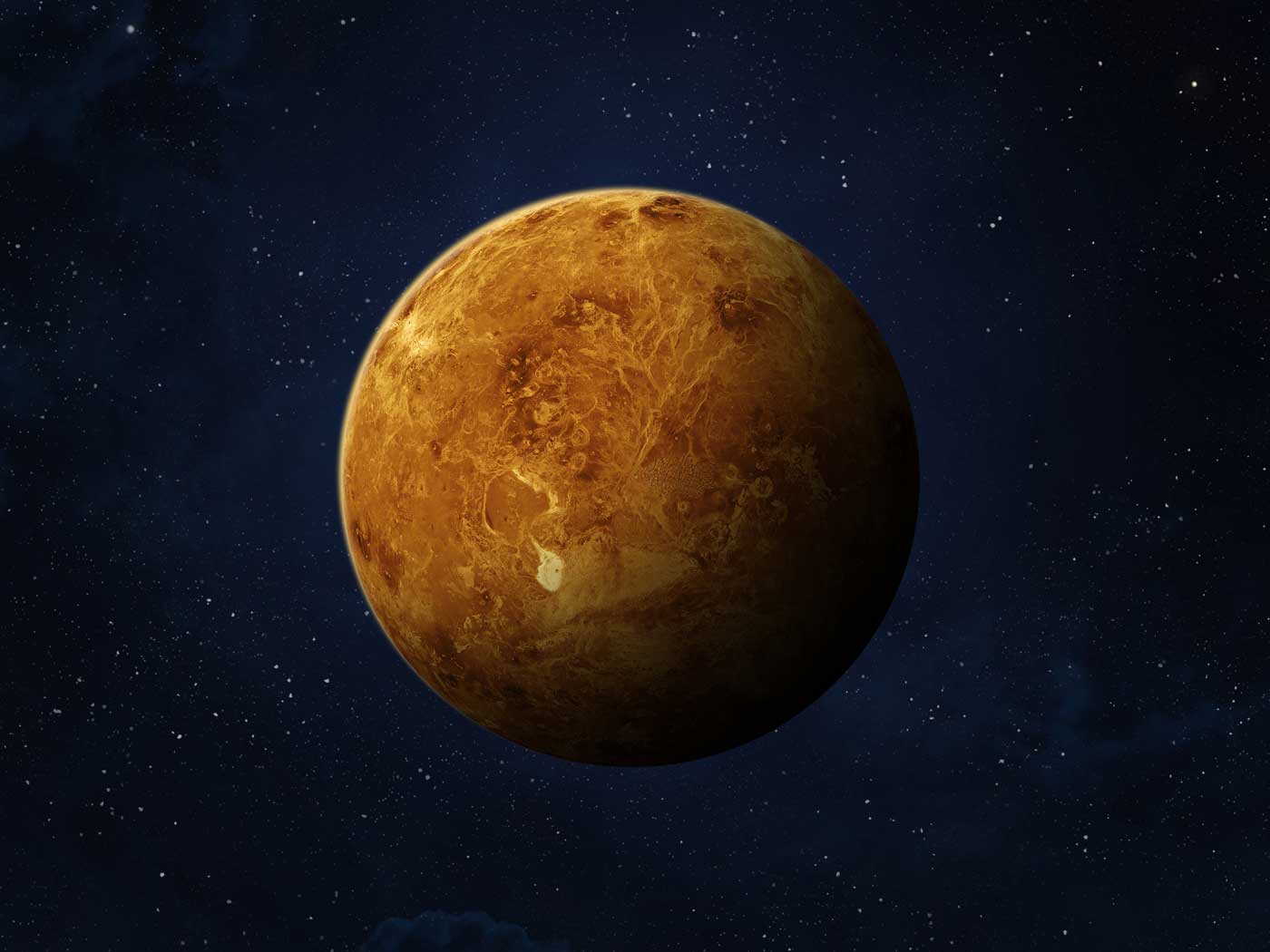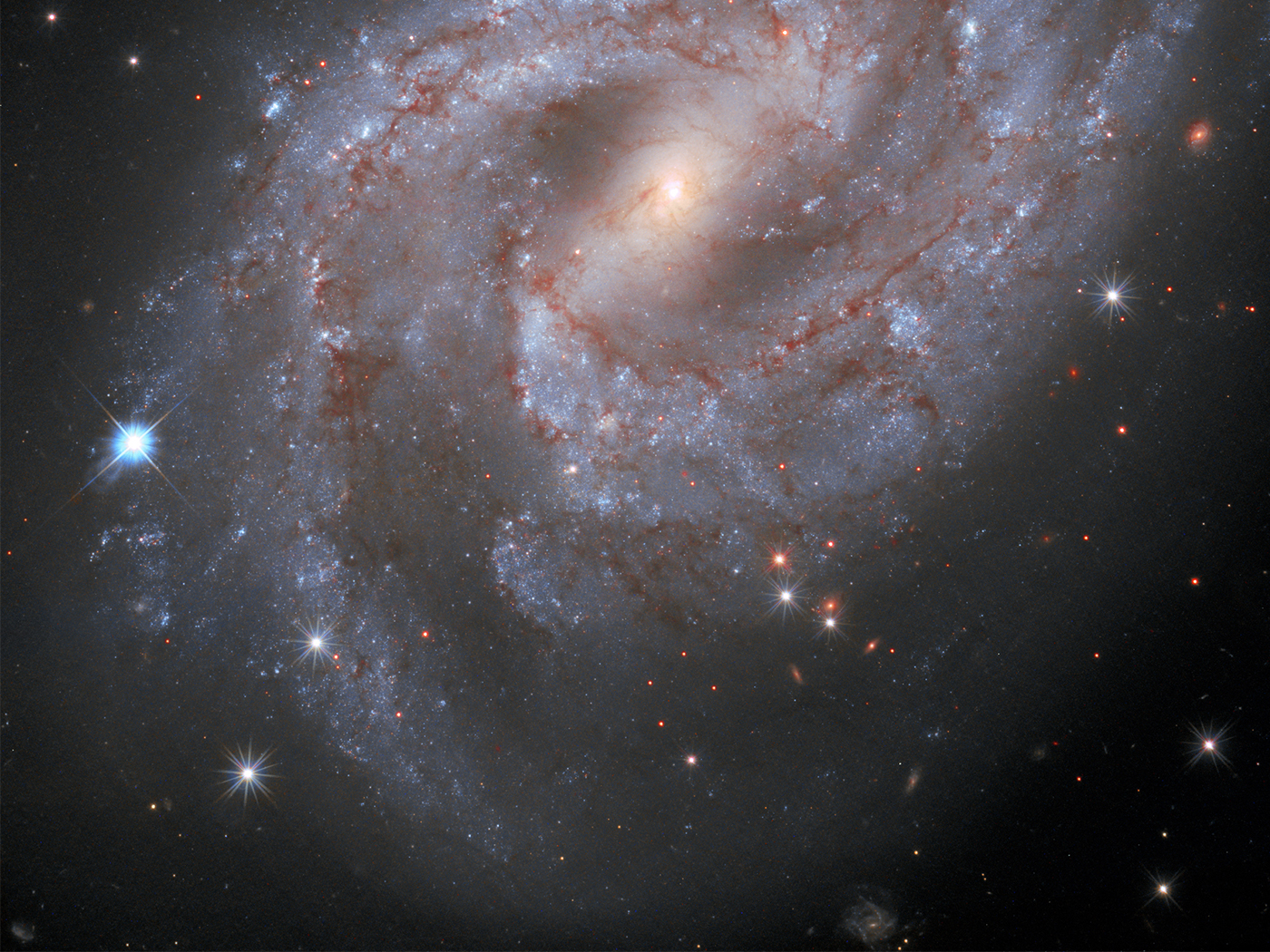The astronomers used an “indirect” method to discover the Wolfe Disk. They realized that light from a quasar more distant than the Wolf Disk had been absorbed by a giant cloud of hydrogen gas. Their discovery of the gas cloud led to their discovery of the disk galaxy within the hydrogen cloud.
Big Bang astronomers assume that light from a galaxy billions of light-years away requires billions of years to reach us. While this may seem reasonable, creation scientists question this assumption.3,4 By Big Bang reckoning, this means that we are seeing these distant objects, not as they are now, but as they were billions of years ago. Therefore Big Bang astronomers expect these distant galaxies to be “immature,” not having time to “evolve.” However, they have repeatedly been surprised by distant galaxies that are more “mature” than expected by Big Bang reckoning.5-9 As reported by the ALMA press release,
In most galaxy formation scenarios, galaxies only start to show a well-formed disk around 6 billion years after the Big Bang. The fact that the astronomers found such a disk galaxy when the Universe was only ten percent of its current age, indicates that other growth processes must have dominated.1
Or perhaps it illustrates that something is wrong with secular ideas about galaxy formation. Or that something is wrong with the assumption that distant light takes billions of years to reach us. Or perhaps both.
Distant “early” galaxies can show differences with nearby more “recent” galaxies, and secular astronomers attribute those differences to an evolutionary process. However, the study’s lead author, Marcel Neeleman of the Max Planck Institute for Astronomy, went on to say,
“The fact that we found the Wolfe Disk using this [indirect] method, tells us that it belongs to the normal population of galaxies present at early times,” said Neeleman. “When our newest observations with ALMA surprisingly showed that it is rotating, we realized that early rotating disk galaxies are not as rare as we thought and that there should be a lot more of them out there.”1
So, not only are these distant galaxies a problem for the Big Bang, there may be many more of them than originally thought!
The fact that Big Bang theorists are continually being “surprised” by their observations is a strong indication that the Big Bang model, despite popular perception, is not a good scientific model.10,11 Why then are so many Christians apparently intimidated into accepting it, especially when it contradicts the Genesis history at so many points?12
References
1. ALMA Discovers Massive Rotating Disk in Early Universe. ALMA Observatory Press Release. Posted on almaobservatory.org May 20, 2020, accessed May 20, 2020.
2. Neeleman, M., et al. 2020. A cold, massive rotating disk galaxy 1.5 billion years after the Big Bang. Nature. 581 (7808): 269-272.
3. Distant starlight in a young universe is used by many as an objection to biblical creation. However, there are a number of subtle unspoken assumptions beneath this argument, assumptions which may seem reasonable but which have not been shown to be true. Likewise, the Big Bang has its own version of this problem (the horizon problem), and this is one of the main reasons that inflation theory was included in the Big Bang. In fact, the problem of “too mature galaxies in the early universe” discussed in this article can be thought of as another light-travel-time problem for the Big Bang, since the expectation that very distant galaxies should look immature is based in part on the assumption that distant starlight takes billions of years to reach us. See also Reference 4.
4. Coppedge, D. F. 2007. The Light-Distance Problem. Acts & Facts. 36 (6).
5. Thomas, B. Distant Galaxies Look Too Mature for Big Bang. Creation Science Update. Posted on ICR.org November 30, 2011, accessed April 22, 2020.
6. Thomas, B. ‘Old’ Galaxy Found in ‘Young’ Part of Universe. Creation Science Update. Posted on ICR.org May 24, 2011, accessed April 22, 2020.
7. Thomas, B. Distant Galactic Cluster Should Not Exist. Creation Science Update. Posted on ICR.org May 21, 2010, accessed April 22, 2020.
8. Thomas, B. Secrets From the Most Distant Galaxy. Creation Science Update. Posted on ICR.org November 18, 2010, accessed April 22, 2020.
9. Hebert, J. ‘Early’ Spiral Galaxy Surprise. Creation Science Update. Posted on ICR.org May 1, 2020, accessed May 21, 2020.
10. Coppedge, D. F. 2008. The Message in Surprise Effects. Acts & Facts. 37 (8): 15.
11. Secular astronomers may object that star and galaxy formation are not actually parts of the Big Bang model per se. While technically true, this is a cop-out. The Big Bang model purports to explain how our present-day universe came to be, and stars and galaxies are a conspicuous part of that universe. Hence, an inability to explain star and galaxy formation is a problem for the model.
12. Morris, J. D. 1997. Is the Big Bang Biblical? Acts & Facts. 26 (5).
*Dr. Jake Hebert is Research Associate at the Institute for Creation Research and earned his Ph.D. in physics from the University of Texas at Dallas.




